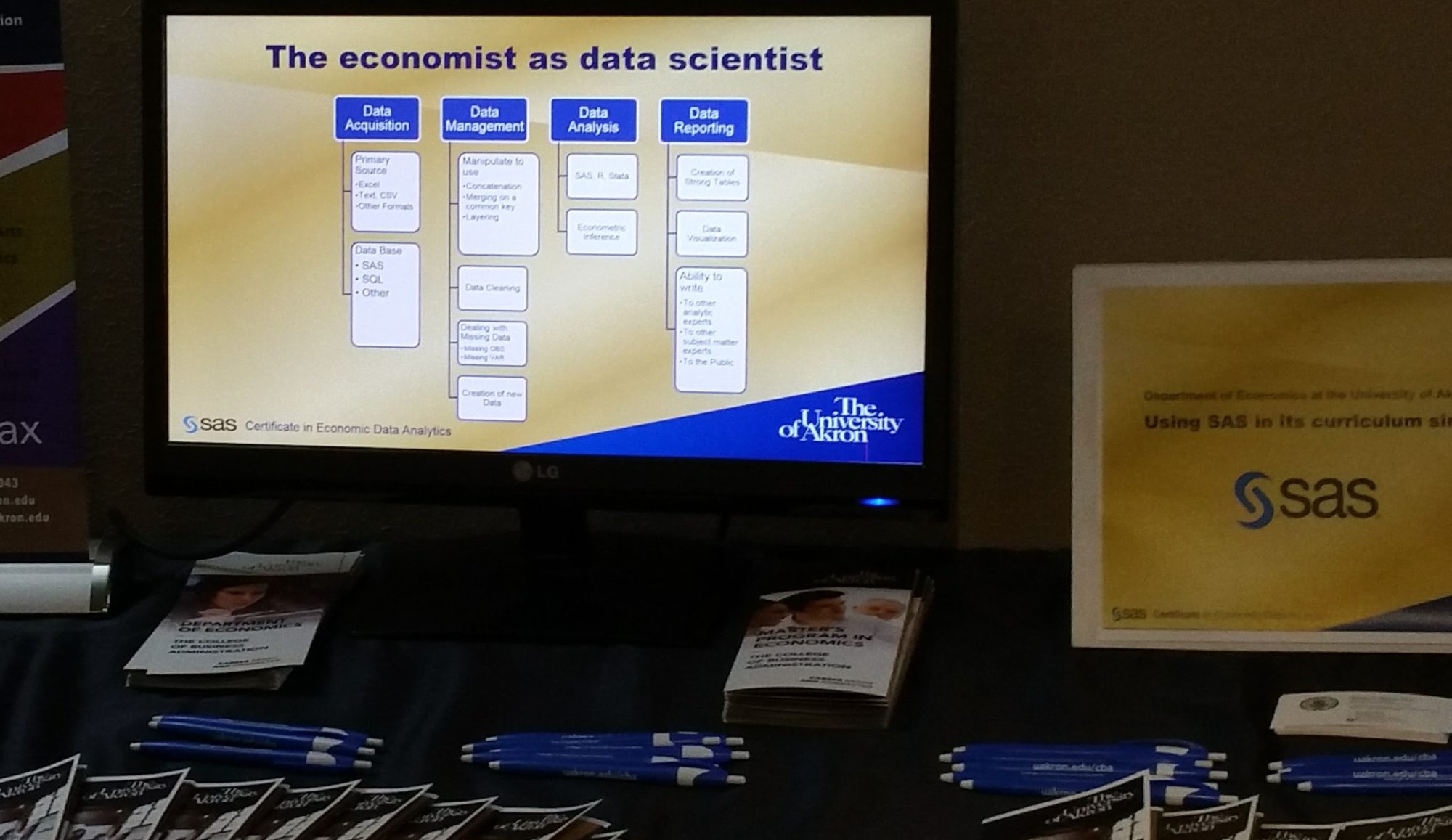Materials:
Course Materials (will attach to your Google Drive)
The syllabus is included in the course materials and carries links to 4 pages of readings which are copied and linked to the source articles below.
Webcasts:
View Part 1 – Sunday 4.00-6.00pm: Introduction to Machine Learning Concepts
(a) S. Athey (2018, January) “The Impact of Machine Learning on Economics,” Sections 1-2.
(b) H. R. Varian (2014) “Big data: New tricks for econometrics.” The Journal of Economic Perspectives, 28 (2):3-27.
(c) S. Mullainathan and J. Spiess (2017) “Machine learning: an applied econometric approach” Journal of Economic Perspectives, 31(2):87-106
View Part 2 – Monday 8.15-9.45am: Prediction Policy Problems
(a) S. Athey (2018, January) “The Impact of Machine Learning on Economics,” Section 3.
(b) S. Mullainathan and J. Spiess (2017) “Machine learning: an applied econometric approach.” Journal of Economic Perspectives, 31(2):87-106.
View Part 3 – Monday 10.00-11.45am: Causal Inference: Average Treatment Effects
(a) S. Athey (2018, January) “The Impact of Machine Learning on Economics,” Section 4.0, 4.1.
(b) A. Belloni, V. Chernozhukov, and C. Hansen (2014) “High-dimensional methods and inference on structural and treatment effects.” The Journal of Economic Perspectives, 28(2):29-50.
(c) V. Chernozhukov, D. Chetverikov, M. Demirer, E. Duo, C. Hansen, W. Newey, and J. Robins (2017, December) “Double/Debiased Machine Learning for Treatment and Causal Parameters.”
(d) S. Athey, G. Imbens, and S.Wager (2016) “Estimating Average Treatment Effects: Supplementary Analyses and Remaining Challenges.” Forthcoming, Journal of the Royal Statistical Society-Series B.
View Part 4 – Monday 12.45-2.15pm: Causal Inference: Heterogeneous Treatment Effects
(a) S. Athey (2018, January) “The Impact of Machine Learning on Economics,” Section 4.2.
(b) S. Athey, G. Imbens (2016) “Recursive partitioning for heterogeneous causal effects.” Proceedings of the National Academy of Sciences, 113(27), 7353-7360.
View Part 5 – Monday 2.30-4.00pm: Causal Inference: Heterogeneous Treatment E�ects, Supplementary Analysis
(a) S. Athey (2018, January) “The Impact of Machine Learning on Economics,” Section 4.2, 4.4.
(b) S. Athey, and G. Imbens (2017) “The State of Applied Econometrics: Causality and Policy Evaluation,” Journal of Economic Perspectives, vol 31(2):3-32.
(c) S. Wager and S. Athey (2017) “Estimation and inference of heterogeneous treatment effects using random forests.” Journal of the American Statistical Association
(d) S. Athey, Tibshirani, J., and S.Wager (2017, July) “Generalized Random Forests“
(e) S. Athey, and Imbens, G. (2015) “A measure of robustness to misspeci�cation.” The American Economic Review, 105(5), 476-480.
View Part 6 – Monday 4.15-5.15pm: Causal Inference: Optimal Policies and Bandits
(a) S. Athey. (2018, January) “The Impact of Machine Learning on Economics,”
Section 4.3.
(b) S. Athey and S. Wager (2017) “Efficient Policy Learning.”
(c) M. Dudik, D. Erhan, J. Langford, and L. Li, (2014) “Doubly Robust Policy
Evaluation and Optimization” Statistical Science, Vol 29(4):485-511.
(d) S. Scott (2010), “A modern Bayesian look at the multi-armed bandit,” Applied Stochastic Models in Business and Industry, vol 26(6):639-658.
(e) M. Dimakopoulou, S. Athey, and G. Imbens (2017). “Estimation Considerations in Contextual Bandits.”
View Part 7 – Tuesday 8.00-9.15am: Deep Learning Methods
(a) Y. LeCun, Y. Bengio and G. Hinton, (2015) “Deep learning” Nature, Vol. 521(7553): 436-444.
(b) I. Goodfellow, Y. Bengio, and A. Courville (2016) “Deep Learning.” MIT Press.
(c) J. Hartford, G. Lewis, K. Leyton-Brown, and M. Taddy (2016) Counterfactual
Prediction with Deep Instrumental Variables Networks.”
View Part 8 – Tuesday 9.30-10.45am: Classi�cation
(a) L. Breiman, J. Friedman, C. J. Stone R. A. Olshen (1984) “Classi�cation and
regression trees,” CRC press.
(b) I. Goodfellow, Y. Bengio, and A. Courville (2016) \Deep Learning.” MIT Press.
View Part 9 – Tuesday 11.00am-12.00pm: Matrix Completion Methods for Causal Panel Data Models
(a) S. Athey, M. Bayati, N. Doudchenko, G. Imbens, and K. Khosravi (2017) “Matrix Completion Methods for Causal Panel Data Models.”
(b) J. Bai (2009), “Panel data models with interactive fi�xed effects.” Econometrica, 77(4): 1229{1279.
(c) E. Cand�es and B. Recht (2009) “Exact matrix completion via convex optimization.” Foundations of Computational Mathematics, 9(6):717-730.











 I learned my data / statistical skepticism from a 1954 book by Darrell Huff called
I learned my data / statistical skepticism from a 1954 book by Darrell Huff called 

